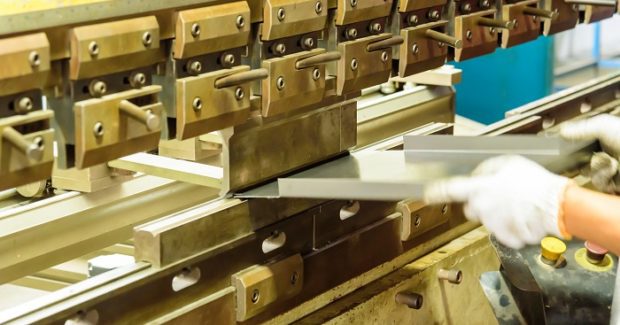How to Correctly Calculate an Unfolded Part
Understanding the relationship between the V-opening, radius, bending allowance, and K factor can help you to properly calculate an unfolded part for more accurate bending on a press brake.
Posted: April 11, 2018
Maybe you’ve received laser cut, punched, or sheared parts that seem to be too long or too short once they are bent on the press brake. Or maybe the parts that are designed on a computer do not turn out to be the same size once they are bent in your shop. If so, this tutorial is designed to teach you more about the factors involved in trying to get the best results when forming parts on a press brake. Let’s start with some simple facts:
- The radius obtained on a bent part affects the length to which we must cut that part (before bending).
- The radius obtained when bending depends 99 percent on the V-opening we choose to work with.
From this, a simple conclusion: before designing the part or cutting the blanks, we must know exactly what V-opening we will use to bend the part on the press brake. How does the radius affect blanks? A larger radius will push the legs of our part toward the outside, giving the impression that the blank was cut too long. A smaller radius will require a blank that must be cut a little longer than if the radius were larger.
HOW THE K FACTOR AFFECTS BLANKS
When bending parts on a press brake, the inner part of the sheet metal is compressed while the outer part is extended. This means that there is a portion of the sheet where the fibers are neither compressed nor extended – this portion is called the neutral axis. The distance from the inside of the bend to the neutral axis is what we call K factor. This value comes inherent with the material we buy, and it cannot be changed. The K factor affects our unfolded blank, not as much as the radius of the part, but we can think of it as a fine tuning calculation tool for blanks: The smaller the K factor, the more material is extended and therefore pushed out, which means our leg will become larger.
THE FORMULA
Once we know the K factor and radius of the bend, we can use these variables to calculate the bending allowance. Below is the formula for calculating the bending allowance for bends 90 deg or less:
BA = π × [(180−β) / 180] × (iR + [(S×K) / 2 ]) − 2 × (iR + S)
For bends above 90 deg to 165 deg:
BA = π × [(180−β) / 180] × (iR + [(S×K) /2 ]) − 2 × (iR + S) × tan [(180−β) /2]
Where:
- iR = internal radius
- S = thickness
- β = angle
- π = 3.14159 . . .
- K = K factor
After the bending allowance has been calculated for each bend, those numbers can be added to the lengths of all the legs, which gives you the correct length for your part. It can be difficult to find all of these variables, let alone to complete this equation. If you need some assistance with your next project, feel free to send your project specs to us so that we can give you a hand when trying to calculate an unfolded part.
















